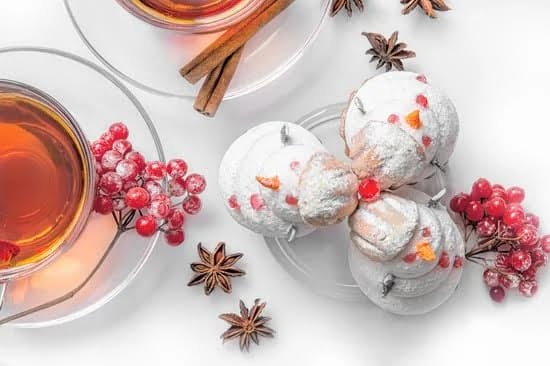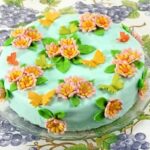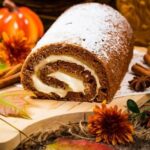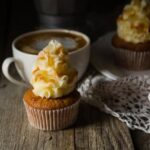Decorating icing on a cake is an essential skill for any aspiring baker or cake decorator. The way the icing is applied can truly make or break the appearance of a cake, and learning how to decorate icing properly can significantly enhance the final product. From simple designs to intricate creations, mastering this art can take your baking to the next level.
The importance of cake decoration cannot be understated. A beautifully decorated cake is often the centerpiece of special occasions, such as birthdays, weddings, and other celebrations. It not only adds a visual appeal but also shows care and effort put into creating something special for the occasion. One of the key elements in cake decoration is the icing, which allows for a wide range of creative possibilities in terms of design, color, and flavor.
Icing plays a crucial role in enhancing the appearance of a cake. There are various types of icing such as buttercream, fondant, royal icing, and ganache that offer different textures and capabilities for decorating. Understanding these differences and knowing how to work with each type can greatly expand your design options when it comes to decorating cakes.
Types of Icing
Buttercream icing is a popular choice for cake decorating due to its creamy texture and delicious taste. It is made with butter, powdered sugar, and flavorings such as vanilla or almond extract. Many decorators prefer using buttercream because it is easy to work with and can be used for piping, spreading, and creating intricate designs. However, buttercream may not hold up well in warm temperatures and can melt easily.
Fondant is a type of icing that is rolled out into a thin sheet and draped over the cake for a smooth and flawless finish. This type of icing is great for creating elaborate designs and decorations on cakes, such as 3D figures or sculpted shapes. Fondant has a sweet taste and holds up well in various weather conditions, making it suitable for outdoor events. However, some people find the texture of fondant to be too chewy or dense.
Royal icing is made from powdered sugar, egg whites, and flavorings. It dries hard and has a glossy finish, making it ideal for creating intricate designs such as lacework or delicate flowers on cakes. Royal icing sets quickly, which allows decorators to build elaborate structures and decorations with ease. However, royal icing can be challenging to work with for beginners as it requires precise consistency and careful handling.
Ganache is a rich mixture of chocolate and cream that can be used as both icing and filling for cakes. It has a luxurious texture that gives cakes a decadent appearance. Ganache is versatile in terms of flavor because different types of chocolates can be used to create variations in taste. However, ganache may require some practice to perfect the technique of applying it smoothly to the cake surface.
Overall, each type of icing has its own unique characteristics and uses when it comes to cake decorating. Depending on the desired look, taste preference, and the environment in which the cake will be served, decorators can choose the best type of icing for their creations.
Tools and Materials
Decorating a cake with icing can be a fun and creative way to add personality and flair to any baked creation. But in order to achieve professional-looking results, it’s important to have the right tools and materials on hand. Here’s a breakdown of the essential items you’ll need for decorating icing on a cake.
One of the most important tools for decorating icing on a cake is a pastry bag or piping bag. This is used to apply the icing in various designs, from simple lines to intricate shapes. Different tips can be attached to the end of the pastry bag to create different effects, such as stars, rosettes, and lettering.
In addition to a pastry bag, an assortment of icing tips is also necessary. These tips come in various shapes and sizes, allowing for greater flexibility when it comes to creating different designs. Some common types of tips include round tips for outlining and writing, star tips for borders and rosettes, and leaf tips for foliage designs.
| Tools | Materials |
|---|---|
| Pastry bag | Icing sugar |
| Icing tips | Food coloring |
| Offset spatula | Cake turntable |
Another essential tool for decorating icing on a cake is an offset spatula. This tool has a long, narrow blade that is angled, making it perfect for spreading and smoothing icing onto the surface of the cake. A smooth surface is crucial when it comes to achieving clean and polished decorations.
Lastly, having a cake turntable can greatly aid in the process of decorating icing on a cake. The ability to rotate the cake as you work allows for more precise and even application of icing. It also helps ensure that all sides of the cake are decorated consistently.
While these are some of the basic tools needed for decorating icing on a cake, there are many other materials that may come in handy depending on your specific design ideas and techniques.
Preparing the Cake
Before you start decorating icing on a cake, it’s important to ensure that the cake itself is ready for the beautiful designs you have in mind. Here are some essential steps to prepare the cake for icing:
1. Cooling: Allow the cake to cool completely before attempting to apply any icing. A warm cake can cause the icing to melt and create a messy finish.
2. Leveling: Use a serrated knife or a cake leveler to trim the top of the cake to create an even surface for decorating. This step is crucial for achieving a professional-looking result.
3. Crumb Coat: Apply a thin layer of icing, known as a crumb coat, to seal in any loose crumbs and create a smooth base for your final layer of icing. This will prevent any unsightly crumbs from peeking through your beautifully decorated icing.
4. Chilling: Once you’ve applied the crumb coat, it’s recommended to chill the cake in the refrigerator for at least 30 minutes before adding your final layer of icing. This will help set the crumb coat and make it easier to achieve a flawless finish.
By following these preparation steps, you’ll be well on your way to creating a stunning masterpiece with beautifully decorated icing on your cake.
Once you have prepared your cake, you can begin decorating it using various techniques such as piping, spreading, and smoothing. With these basic decorating skills mastered, you can then move on to more advanced techniques like creating intricate designs such as rosettes, ruffles, and borders using different icing tips and methods. Remember that practice makes perfect when it comes to decorating cakes, so don’t be afraid to experiment and get creative with your designs.
Basic Decorating Techniques
Decorating icing on a cake is an essential part of creating a visually appealing and delicious dessert. There are a variety of techniques that can be used to decorate icing on a cake, ranging from simple designs to more intricate and elaborate decorations. Whether you are a beginner or an experienced baker, mastering basic decorating techniques is the key to creating beautiful and professional-looking cakes.
To get started with decorating icing on a cake, you will need the following tools and materials:
- Piping bags: These are used for piping icing onto the cake in various designs.
- Icing tips: Different tips can create different designs, such as flowers, leaves, or borders.
- Offset spatula: This tool is used for spreading and smoothing out the icing on the cake.
- Turntable: A turntable makes it easier to rotate the cake while decorating.
- Palette knife: Used for smoothing out the icing and creating clean edges.
Once you have gathered all the necessary tools and materials, it’s important to prepare the cake for icing. Start by ensuring that the cake is completely cooled before applying any icing. It’s also helpful to level the top of the cake to create a flat surface for decorating. You can use a serrated knife or a cake leveler to accomplish this.
When it comes to basic decorating techniques, there are several simple designs that you can create using icing. Piping is one of the most common techniques, which involves filling a piping bag with icing and using different tips to create various shapes and patterns on the cake.
Spreading and smoothing out the icing with an offset spatula is another basic technique that creates a clean and polished look. Regardless of which technique you choose, practicing these basic methods will help you gain confidence in your decorating skills and set a solid foundation for more advanced techniques in the future.
Advanced Decorating Techniques
Creating Intricate Designs
To take your cake decorating skills to the next level, advanced techniques are key. Creating intricate designs using icing can really make a cake stand out. Techniques such as rosettes, ruffles, and borders can add a touch of elegance to any cake. Using different icing tips and techniques will allow you to create more elaborate decorations. Practice is essential for mastering these advanced techniques, so don’t be discouraged if it doesn’t come easily at first.
Using Different Icing Tips
Different icing tips can produce varying effects when decorating a cake. For example, a star tip can be used to create beautiful rosettes or stars, while a petal tip is perfect for creating delicate ruffles. Experimenting with different tips and getting familiar with how each one works will expand your decorating capabilities. Be sure to have a variety of tips on hand to give yourself options when it comes to creating different designs and textures.
Layering Techniques
Layering techniques can add depth and dimension to your cake decorations. By layering icing in different ways, you can create visually stunning designs that will impress any guest. Experiment with layering colors, textures, and shapes to achieve unique and eye-catching decorations on your cakes. As with any new technique, practice is crucial in order to master the art of layering icing effectively.
By delving into these advanced decorating techniques for icing on cakes, you’ll be able to take your cake decoration skills up a notch. Don’t be afraid to get creative and experiment with various designs – after all, practice makes perfect.
Color and Flavor
When it comes to decorating icing on a cake, adding color and flavor can truly elevate the overall appearance and taste of the dessert. There are various ways to achieve vibrant and unique icing colors.
One popular method is using gel food coloring, which is more concentrated than liquid food coloring and does not alter the consistency of the icing. Another option is to use natural ingredients such as fruit purees or extracts to add both color and flavor to the icing.
For those who want to experiment with different flavors for their icing, there are countless possibilities. From classic vanilla and chocolate to more unique options like coconut or coffee, adding flavor to your icing can take your cake to the next level. It’s important to remember that adding certain ingredients can affect the consistency of the icing, so it’s essential to adjust the recipe accordingly.
In addition, when using natural ingredients for color and flavor, it’s crucial to consider any potential allergies that your guests may have. Some individuals may be allergic to certain fruits or nuts used for coloring or flavoring, so it’s always best to ask about dietary restrictions before incorporating these elements into your cake decorations.
Overall, experimenting with color and flavor in your cake decorating can lead to beautiful and delicious results that will impress everyone at your next event or celebration.
| Decorating Icing Tips | Data |
|---|---|
| Gel food coloring | More concentrated than liquid food coloring; does not alter consistency of icing. |
| Natural ingredients | Using fruit purees or extracts for both color and flavor can be an option. |
| Allergies consideration | Ask about dietary restrictions before incorporating natural ingredients; some guests might have allergies. |
Troubleshooting
Decorating icing on a cake can be a fun and rewarding experience, but it’s not without its challenges. There are several common issues that may arise when working with icing, but with the right techniques and know-how, these problems can easily be resolved.
One common issue is air bubbles in the icing, which can create an uneven and bumpy finish. To prevent this, make sure to smooth out the icing as you go and tap the cake gently on the counter to release any trapped air.
Another common problem is icing that is too runny or too stiff. If your icing is too runny, you can add more powdered sugar to thicken it up. On the other hand, if your icing is too stiff, you can add a small amount of liquid such as water or milk to loosen it up. It’s important to make adjustments gradually and test the consistency frequently to achieve the perfect texture for decorating.
Additionally, if you find that your icing colors are not turning out as vibrant as you’d like, consider using gel-based food coloring instead of liquid coloring. Gel coloring is more concentrated and will give you brighter, more intense colors. Another tip for achieving vibrant colors is to start with a white base for your icing before adding color, as this will allow the true color of the dye to shine through.
By understanding how to troubleshoot common issues when decorating icing on a cake, you’ll be better equipped to create beautiful and professional-looking designs. Remember that practice makes perfect, so don’t be discouraged if your first few attempts don’t turn out exactly as planned. With patience and perseverance, you’ll soon become a master at decorating cakes with stunning icing designs.
Conclusion
In conclusion, the art of decorating icing on a cake is an essential skill for anyone who enjoys baking and wants to create visually stunning desserts. From simple designs to elaborate decorations, beautiful icing can significantly enhance the appearance of a cake and make it truly stand out. Whether you are a beginner or an experienced baker, mastering the techniques of decorating icing can take your cakes to the next level and leave a lasting impression on your guests.
Throughout this article, we have discussed the different types of icing, essential tools and materials needed for decorating, as well as basic and advanced decorating techniques. We have also provided tips on adding color and flavor to icing, troubleshooting common issues, and avoiding mistakes. By following these guidelines, anyone can learn how to decorate icing on a cake with precision and creativity.
As with any skill, practice makes perfect when it comes to decorating icing on a cake. Don’t be afraid to experiment with different designs, colors, and flavors. Let your imagination run wild and get creative with your cake decorations. With dedication and patience, you can master the art of decorating icing on a cake and create beautiful desserts that will be remembered for years to come.
Frequently Asked Questions
How Do You Put Decorative Icing on a Cake?
Putting decorative icing on a cake involves using a piping bag and various tips to create different patterns and designs. It’s important to start with the right consistency of icing, so it holds its shape but is still easy to pipe.
How Do You Attach Icing to a Cake?
Attaching icing to a cake can be done by applying a thin layer of frosting, called a crumb coat, to seal in any loose crumbs. Then, spread a thicker layer of icing over the crumb coat using a spatula or icing smoother for an even finish.
What Is the Best Way to Apply Icing and Frost on a Cake?
The best way to apply icing and frosting on a cake is to start with the right consistency of icing. Spread a thin layer as a base before adding more layers or decorative elements. Using offset spatulas or bench scrapers can help achieve smooth finishes.

Welcome to our cake decorating blog! My name is Destiny Flores, and I am the proud owner of a cake decorating business named Cake Karma. Our mission is to provide delicious, beautiful cakes for all occasions. We specialize in creating custom cakes that are tailored specifically to each customer’s individual needs and tastes.





